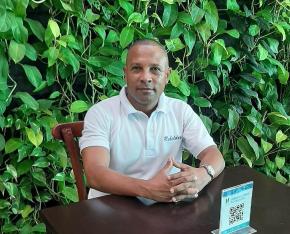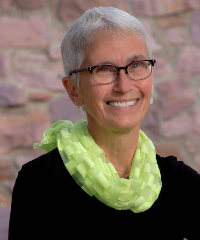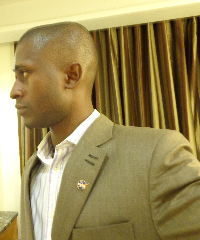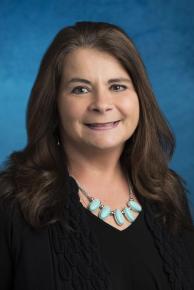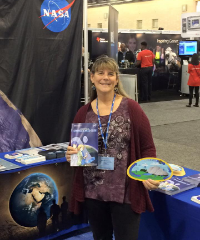Community Blogs
Community Blogs
Discover how the GLOBE community is engaging in all things GLOBE through the community blog posts below.
Learn how to create a GLOBE community blog post.
Filter By:
Blogs List
Mis queridos lectores los invito a consultar el siguiente artículo
publicado este año por la revista Palobra de la Universidad de
Cartagena (Colombia).
https://revistas.unicartagena.edu.co/index.php/palobra/search/authors/view?givenName=Delimiro&familyName=Navarro%20Arrieta&affiliation=Instituci%C3%B3n%20Educativa%20de%20Gambote&country=CO&authorName=Navarro%20Arrieta%2C%20Delimiro
El cual permite difundir los resultados de un proyecto maravilloso en
el que la investigación dirigida es la estrategia pedagógica
implementada para potenciar las competencias ...
Read More »
Posted in:
Curriculum:
EDUCATION RESEARCH
STEM
GLOBE International STEM Network (GISN):
GLOBE INTERNATIONAL STEM NETWORK (GISN)
GLOBE Mission Earth News:
STUDENT RESEARCH & ACTIVITIES
GLOBE Science Topics:
DATA INCLUDED
GLOBE PROTOCOLS
Investigation Areas:
HYDROSPHERE
My group’s project focused on using land cover data and GLOBE
Observer images to create a machine learning model that can predict
land surface temperature - a measure of how hot the surface of the
Earth feels in a given location. For context, GLOBE is short for
“Global Learning and Observations to Benefit the Environment”. It’s an
app that lets volunteers across the world take observations of their
local community (these could be of cloud cover, land cover, or
mosquito habitats) and these observations help scientists track
changes in the environment. It’s part of a wider ...
Posted in:
GLOBE Science Topics:
EARTH AS A SYSTEM
Investigation Areas:
HYDROSPHERE
EARTH AS A SYSTEM
MOSQUITOES
Learning Activities:
EARTH AS A SYSTEM
LAND COVER/BIOLOGY
Primary Audience:
PARTNERS
STUDENTS
TEACHERS
Student Research Reports:
MISSION MOSQUITO REPORT
For the past three years, the GLOBE Mission Earth (GME) Team at the University of Toledo, Ohio has been teaching and mentoring NASA-SEES high school students across the United States in the study of the Urban Heat Island Effect (UHIE) and Air Quality. In 2023, the NASA-SEES High School Virtual Internship Program had 20 interns for both the UHIE and Air Quality Groups.
During the 6-week virtual training, interns conducted research on the topics of their choice and met virtually three times a week to complete their projects. They also completed weekly assignments.
For the UHIE ...
Posted in:
Curriculum:
EDUCATION RESEARCH
STEM
GLOBE Working Groups:
EVALUATION WORKING GROUP
SCIENCE WORKING GROUP
EDUCATION WORKING GROUP
TECHNOLOGY WORKING GROUP
Investigation Areas:
ATMOSPHERE
HYDROSPHERE
EARTH AS A SYSTEM
PEDOSPHERE (SOIL)
BIOSPHERE
Primary Audience:
COUNTRY COORDINATORS
PARTNERS
SCIENTISTS
STUDENTS
TEACHERS
TRAINERS
Student Research Reports:
U.S. STUDENT RESEARCH SYMPOSIA (SRS)
MISSION EARTH REPORT
I built my mosquito traps on June 20th and ran the experiment until July 15th. I collected a total of 15 observations during this period. To construct the traps I used three identical pots to hold water. The goal of my experiment was to find which type of mosquito bait would be the most effective at attracting and sheltering mosquitos. For the three baits I used dried leaves, grass clippings, and a wooden plank. I chose these three baits because they represent possible real life environments that mosquitos may breed in. The dried leaves simulates a pool of water that does not evaporate ...
Posted in:
Investigation Areas:
HYDROSPHERE
EARTH AS A SYSTEM
LAND COVER CLASSIFICATION
MOSQUITOES
Primary Audience:
STUDENTS
TEACHERS
TRAINERS
AOI Fieldwork
At first, collecting land cover data for 37 points within my area of interest felt like a daunting task. However, after only a few "expeditions" in the past week, I was able to complete all 37 observations.
To make my work easier and more accurate, I intentionally choose an AOI that would contain as many points as possible within a nearby park. This was to ensure that I could access as many points as possible. Despite my best efforts, many of the points still landed in residential properties. This activity actually reminded me how many neighborhoods there are in my ...
Posted in:
Investigation Areas:
HYDROSPHERE
EARTH AS A SYSTEM
LAND COVER CLASSIFICATION
MOSQUITOES
Primary Audience:
STUDENTS
TEACHERS
TRAINERS
Student Research Reports:
INTERNATIONAL VIRTUAL SCIENCE SYMPOSIUM REPORT
MISSION MOSQUITO REPORT
GLOBE Goes to Camp is in full swing for the summer with GLOBE data collection and informal learning opportunities for campers across the United States. Campers participated in hydrology, soil, land cover, and tree investigations throughout the month of June looking for freshwater macro-invertebrates all the way to who could find the tallest tree. Campers are engaging not only in STEAM based learning opportunities, but are also building a sense of environmental stewardship as they learn about how what we do affects the Earth as a system. Communities are becoming involved as they learn ...
Posted in:
Curriculum:
LANGUAGE CULTURE AND ARTS
SCIENCE AND MATH
STEM
Investigation Areas:
HYDROSPHERE
LAND COVER CLASSIFICATION
One of the things that I find the most inspiring about The GLOBE Program , is the rich collaboration that it enables us to have with each other. Speaking for myself, I now have friends literally all around the globe, because of my engagement and interaction with GLOBE. I thought I would take a little time to write about a very inspiring intergenerational collaboration that I have found particularly enriching.
During the virtual GLOBE Annual Meeting in 2021, I was asked by a participant if we could meet up in a virtual room and chat. I was astonished to meet the extremely vibrant ...
Posted in:
Curriculum:
EDUCATION RESEARCH
LANGUAGE CULTURE AND ARTS
SCIENCE AND MATH
TECHNOLOGY
STEM
Field Campaigns:
GPM
GLOBE International STEM Network (GISN):
GLOBE INTERNATIONAL STEM NETWORK (GISN)
GLOBE Science Topics:
BACKYARD SCIENCE
CLIMATE
CLIMATE CHANGE
DATA INCLUDED
GENERAL SCIENCE
GLOBE PROTOCOLS
EARTH AS A SYSTEM
EARTH SYSTEM SCIENCE
SCIENTIST SKILLS
MEETINGS/CONFERENCES
Investigation Areas:
ATMOSPHERE
HYDROSPHERE
EARTH AS A SYSTEM
PEDOSPHERE (SOIL)
BIOSPHERE
Learning Activities:
ATMOSPHERE AND CLIMATE
EARTH AS A SYSTEM
HYDROLOGY
LAND COVER/BIOLOGY
SOIL
Primary Audience:
ALUMNI
COUNTRY COORDINATORS
PARTNERS
SCIENTISTS
STUDENTS
TEACHERS
TRAINERS
Hello! My name is Nikita A., and I am from Chicago, Illinois. I participated in the NASA SEES Internship Program during the summer of 2022 as part of the Earth System Explorers team. Our program kicked off in the first week of June with an introductory webinar that detailed the goals for the next eight weeks. For the Earth System Explorers project, our goal was to research the harm mosquitoes-borne diseases pose to public health. Every Wednesday, one of our mentors or a guest scientist would meet with us to enhance our learning. They would teach us about GLOBE Observer App data analysis ...
Posted in:
GLOBE Science Topics:
EARTH SYSTEM SCIENCE
Investigation Areas:
HYDROSPHERE
MOSQUITOES
News Topics:
NEWS BRIEFS
Primary Audience:
ALUMNI
PARTNERS
SCIENTISTS
STUDENTS
TEACHERS
Student Research Reports:
INTERNATIONAL VIRTUAL SCIENCE SYMPOSIUM REPORT
MISSION MOSQUITO REPORT
First Post:
For my project, I wanted to see how CO2 emissions could affect mosquito activity. To do this, I set up 4 water bottle traps. 2 of the traps contained a solution of tap water (1 cup), sugar (1/4 cup), and yeast (1 gram). The yeast and the sugar react to release carbon dioxide. (Fermentation) The other two bottles contained a basic solution of tap water and grass. One bottle of each type was placed in two different AOI locations.
Brief hypothesis: If mosquitoes are naturally attracted to carbon dioxide, then the CO2 emitting trap will have greater mosquito ...
Posted in:
GLOBE Science Topics:
EARTH AS A SYSTEM
EARTH SYSTEM SCIENCE
Investigation Areas:
HYDROSPHERE
EARTH AS A SYSTEM
MOSQUITOES
Primary Audience:
STUDENTS
TEACHERS
Student Research Reports:
INTERNATIONAL VIRTUAL SCIENCE SYMPOSIUM REPORT
MISSION MOSQUITO REPORT
My main goal is to see what attracts mosquitos and although there are so many variables out there I only had the resources to test 2: color vibrancy and bait!
I have 6 plastic cups filled with about a cup and a half of water each in addition to their assigned "bait". 2 cups are my controls which only contain water. One is a vibrant purple while the other is white. I keep this paired design for all my baits and also test grass clippings and salt water (mainly to see if sweat-that contains salt and other electrolytes-actually attract mosquitos). Each cup of salt water has about 2 tsp of ...
Posted in:
GLOBE Science Topics:
EARTH AS A SYSTEM
EARTH SYSTEM SCIENCE
Investigation Areas:
HYDROSPHERE
EARTH AS A SYSTEM
MOSQUITOES
Primary Audience:
STUDENTS
TEACHERS
Student Research Reports:
INTERNATIONAL VIRTUAL SCIENCE SYMPOSIUM REPORT
MISSION MOSQUITO REPORT
Purpose
The purpose of this experiment is to determine the prevalence of two characteristics of containers in attracting more mosquitos. I wanted to measure if mosquitos prefer to lay their eggs in locations with more shade as well as how the color of the trap, dark or clear, can also impact this preference.
Methods
Since Aedes mosquitos, which are the most common type of mosquitos in San Diego County, tend to prefer containers with larger openings, I used such dishes to create my traps. Out of the three traps, I use a fully clear container for one and black containers for ...
Posted in:
GLOBE Science Topics:
EARTH AS A SYSTEM
EARTH SYSTEM SCIENCE
Investigation Areas:
HYDROSPHERE
EARTH AS A SYSTEM
MOSQUITOES
Primary Audience:
STUDENTS
TEACHERS
Student Research Reports:
INTERNATIONAL VIRTUAL SCIENCE SYMPOSIUM REPORT
MISSION MOSQUITO REPORT
I decided to have two controls for my experiment: plain water and sugar water. Since I am testing how mosquitoes react to flowers; specifically, the number of eggs I collect, I wanted to get more variant data by having plain water and sugar water. After the first week of my experiment, I saw that many ants infested the sugar water (as anticipated), however, I found more mosquito larvae in the traps that had both sugar and flowers. This concluded that either the mosquitoes were attracted to the scent of the flowers or the appearance.
Living in New York City, there aren't many ...
Posted in:
GLOBE Science Topics:
EARTH AS A SYSTEM
EARTH SYSTEM SCIENCE
Investigation Areas:
HYDROSPHERE
EARTH AS A SYSTEM
MOSQUITOES
Primary Audience:
STUDENTS
TEACHERS
Student Research Reports:
INTERNATIONAL VIRTUAL SCIENCE SYMPOSIUM REPORT
MISSION MOSQUITO REPORT
Introduction/Theory
For my mosquito experiment, I am testing how different kinds of bait affect the number of oviposition in my trap. Different mosquito species are attracted to different habitats, natural or artificial, some of which have been changing due to climate change. Mosquitoes are the most dangerous animal in the world because of their disease transmitting abilities, so understanding their oviposition instincts could be crucial in order to prevent further spreading of dangerous diseases such as the dengue virus, malaria, or the zika virus.
Variables ...
Posted in:
GLOBE Science Topics:
EARTH AS A SYSTEM
EARTH SYSTEM SCIENCE
Investigation Areas:
HYDROSPHERE
EARTH AS A SYSTEM
MOSQUITOES
Primary Audience:
STUDENTS
TEACHERS
Student Research Reports:
INTERNATIONAL VIRTUAL SCIENCE SYMPOSIUM REPORT
MISSION MOSQUITO REPORT
During my field study, I observed that I found more mosquito larvae in dirty ditches under an open sky. Based on my observations, for my mosquito traps, the specific variables I chose to control were centered around the quality of water and trap wall materials. I made 3 traps: A deep ceramic pot with mud, water, sticks, and dead and live plants, a cut water bottle with clear water and black electrical tape wrapped around it, and a shallow, wide plastic dish filled with water and dead vegetation but relatively little other particulates.
1. Pot trap with ...
Posted in:
GLOBE Science Topics:
EARTH AS A SYSTEM
EARTH SYSTEM SCIENCE
Investigation Areas:
HYDROSPHERE
MOSQUITOES
Primary Audience:
STUDENTS
TEACHERS
Student Research Reports:
INTERNATIONAL VIRTUAL SCIENCE SYMPOSIUM REPORT
MISSION MOSQUITO REPORT
After reading the article "Container Type Affects Mosquito Oviposition Choice," I was inspired to test how a container's surface area, an abiotic parameter, may affect female mosquito oviposition choice (Parker et al). At first, I was really curious about how the ratio of surface area to volume in a container affected oviposition choice. Thus, I began my experiment by finding containers with different surface areas but of similar volumes so I could control the volume of water in each container and more effectively isolate whether surface area affected oviposition choice. The first ...
Posted in:
Investigation Areas:
HYDROSPHERE
EARTH AS A SYSTEM
MOSQUITOES
Primary Audience:
STUDENTS
TEACHERS
Student Research Reports:
INTERNATIONAL VIRTUAL SCIENCE SYMPOSIUM REPORT
MISSION MOSQUITO REPORT
Conclusion: Although no mosquitoes were found, this process has helped me understand the methodology of making an experiment and having to deal with hardships and setbacks. There were many potential sources of error both within the system of the experiment and with outside forces. Systematic errors could have stemmed from the trap design or location. The weather was a factor of random error. The weather varied across the duration of the experiment, sometimes drastically within a single week. The weather changes could have been counteracted with more frequent checking of the ...
Posted in:
GLOBE Science Topics:
EARTH AS A SYSTEM
EARTH SYSTEM SCIENCE
Investigation Areas:
HYDROSPHERE
MOSQUITOES
Primary Audience:
STUDENTS
TEACHERS
Student Research Reports:
INTERNATIONAL VIRTUAL SCIENCE SYMPOSIUM REPORT
MISSION MOSQUITO REPORT
I decided to test the impacts of fertilizer on mosquito breeding habitats.
Background:
I live in the Tampa Bay Area in Florida, and a major issue facing our ecosystems is fertilizer entering our waterways from runoff after people fertilize their lawns before it rains. This can lead to major algae blooms, like red tide, which are harmful to the rest of our marine organisms. Just last year, there was a particularly dangerous bloom that led to a fish kill where our waterways were littered with millions of dead fish.
However, the Tampa Bay Area contains more than just marine ...
Posted in:
Investigation Areas:
HYDROSPHERE
MOSQUITOES
Primary Audience:
STUDENTS
TEACHERS
Student Research Reports:
INTERNATIONAL VIRTUAL SCIENCE SYMPOSIUM REPORT
MISSION MOSQUITO REPORT
Have you ever wondered why NASA has chosen to follow water ? NASA’s James Webb Space Telescope has captured the distinct signature of water outside our solar system. NASA's Artemis program is examining the presence of water on the Moon in advance of sending and establishing a sustainable human presence there. The answer is simple - water is key to life as we know it, including on planet Earth. Only 2.5% of the water on Earth is fresh, and only a tiny fraction of that is available for use. NASA and other space agencies’ remote sensing satellites provide vital information to ...
Posted in:
GLOBE Science Topics:
EARTH SYSTEM SCIENCE
Investigation Areas:
HYDROSPHERE
EARTH AS A SYSTEM
My involvement in the Stem Enhancement in Earth Science (SEES) program started sometime around early spring 2021. The involvement was preceded by a strong recommendation from Dr. Kevin Czajkowski, PI, GLOBE Mission Earth, The University of Toledo.
Indeed, to me as a member of the GLOBE International STEM Network (GISN), my participation in SEES became an opportunity to invoke the GISN mandate which includes to mentor and inspiring ...
Posted in:
Curriculum:
ASSESSMENT AND EVALUATION
EDUCATION RESEARCH
SCIENCE AND MATH
TECHNOLOGY
STEM
Field Campaigns:
WATERSHEDS
SMAP
SURFACE TEMPERATURE
GPM
GLOBE Science Topics:
EARTH AS A SYSTEM
Investigation Areas:
ATMOSPHERE
HYDROSPHERE
PEDOSPHERE (SOIL)
BIOSPHERE
Learning Activities:
EARTH AS A SYSTEM
Primary Audience:
PARTNERS
SCIENTISTS
STUDENTS
Did you know that NASA's Earth-observing satellites gather data that is being used by people all over the world to help respond to a variety of challenges? The 2022 GLOBE International Virtual Science Symposium is focusing on "Engineering Solutions for a Changing Climate". In this blog, I will share some information about the ways that Faisal Hossain, a Civil and Environmental Engineering Professor at the University of Washington, is using engineering and solving environmental issues through engineering solutions.
Faisal Hossain grew up in Bangladesh where he ...
Posted in:
Curriculum:
SCIENCE AND MATH
TECHNOLOGY
STEM
Field Campaigns:
SEASONS AND BIOMES
WATERSHEDS
SMAP
GPM
GLOBE Science Topics:
BACKYARD SCIENCE
CLIMATE
CLIMATE CHANGE
DATA INCLUDED
GENERAL SCIENCE
GLOBE PROTOCOLS
EARTH AS A SYSTEM
EARTH SYSTEM SCIENCE
SCIENTIST SKILLS
MEETINGS/CONFERENCES
GLOBE Working Groups:
EDUCATION WORKING GROUP
Investigation Areas:
ATMOSPHERE
HYDROSPHERE
EARTH AS A SYSTEM
PEDOSPHERE (SOIL)
BIOSPHERE
Learning Activities:
ATMOSPHERE AND CLIMATE
EARTH AS A SYSTEM
HYDROLOGY
LAND COVER/BIOLOGY
SOIL
News Topics:
COMPETITIONS
SCRC RESEARCH
VIRTUAL SCIENCE FAIR
Primary Audience:
ALUMNI
COUNTRY COORDINATORS
PARTNERS
SCIENTISTS
STUDENTS
TEACHERS
TRAINERS
Student Research Reports:
STANDARD RESEARCH REPORT
INTERNATIONAL VIRTUAL SCIENCE SYMPOSIUM REPORT
U.S. STUDENT RESEARCH SYMPOSIA (SRS)
MISSION EARTH REPORT
MISSION MOSQUITO REPORT
Teacher's Guide:
STANDARDS REQUIREMENTS
GRADE LEVELS
INVESTIGATION AREA DOCUMENTS
—
20 Items per Page






